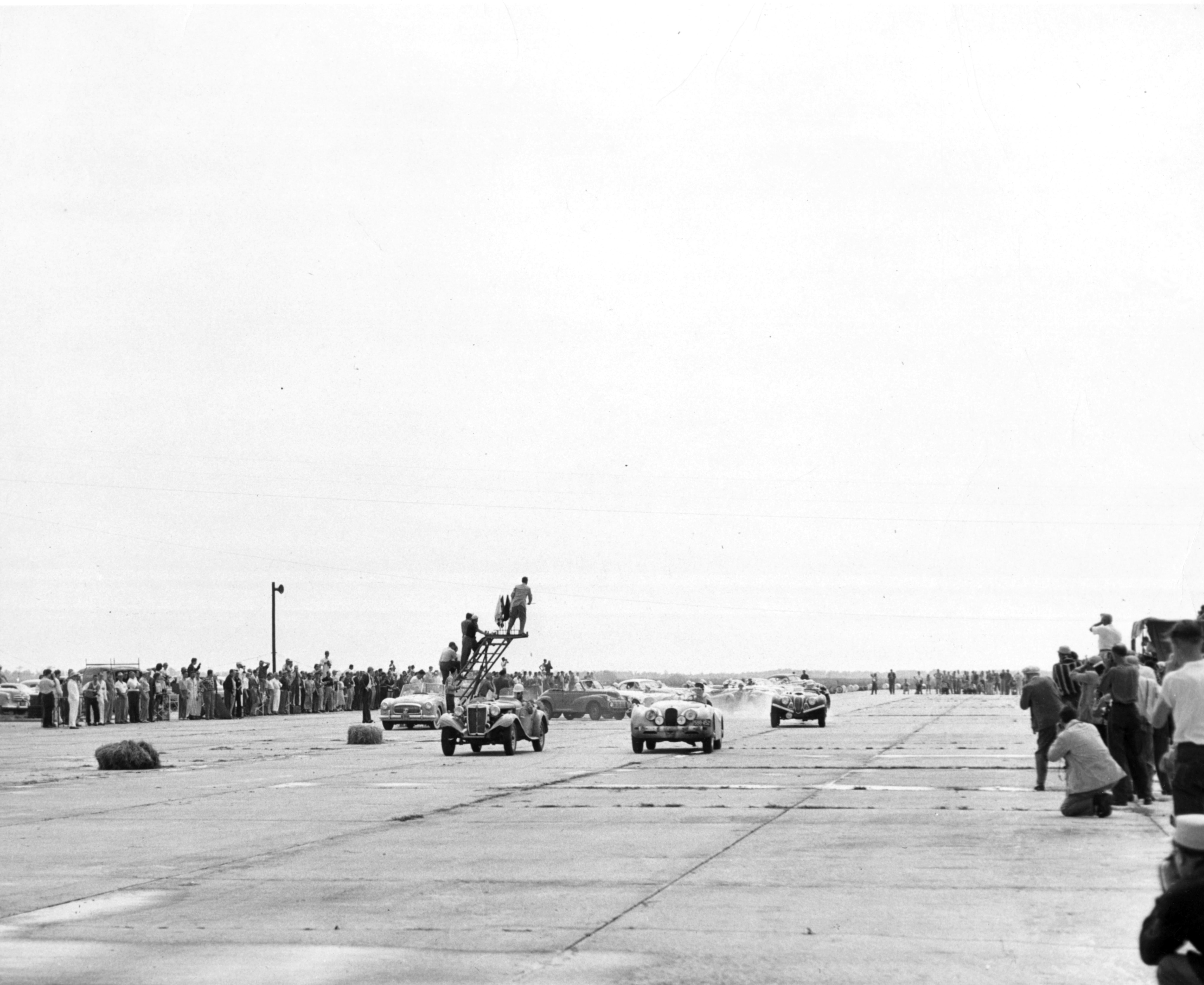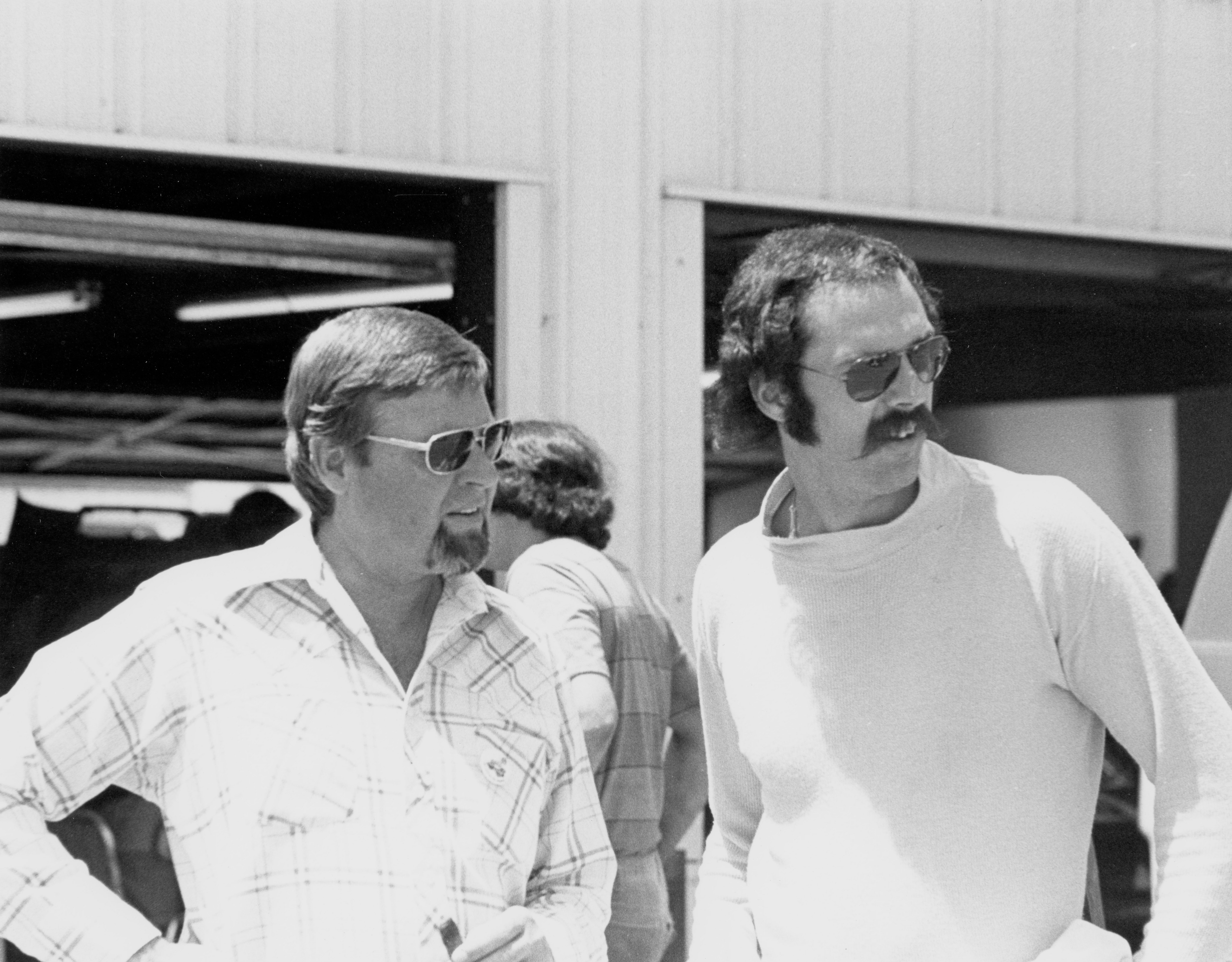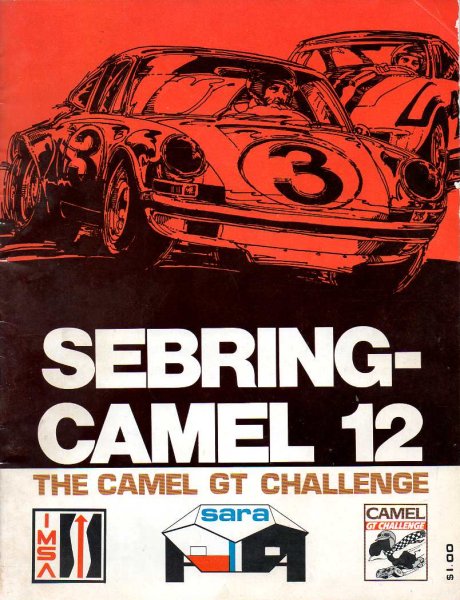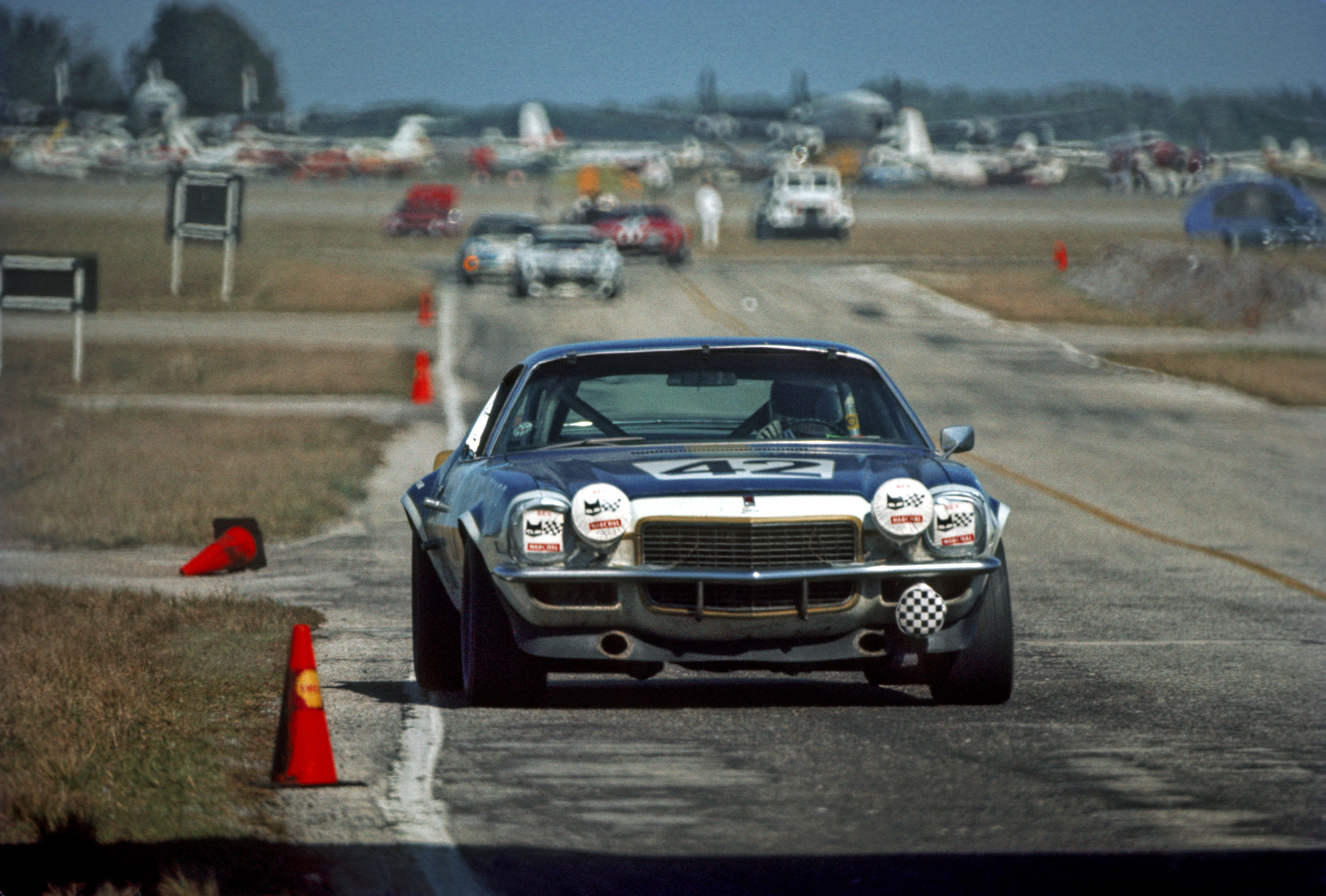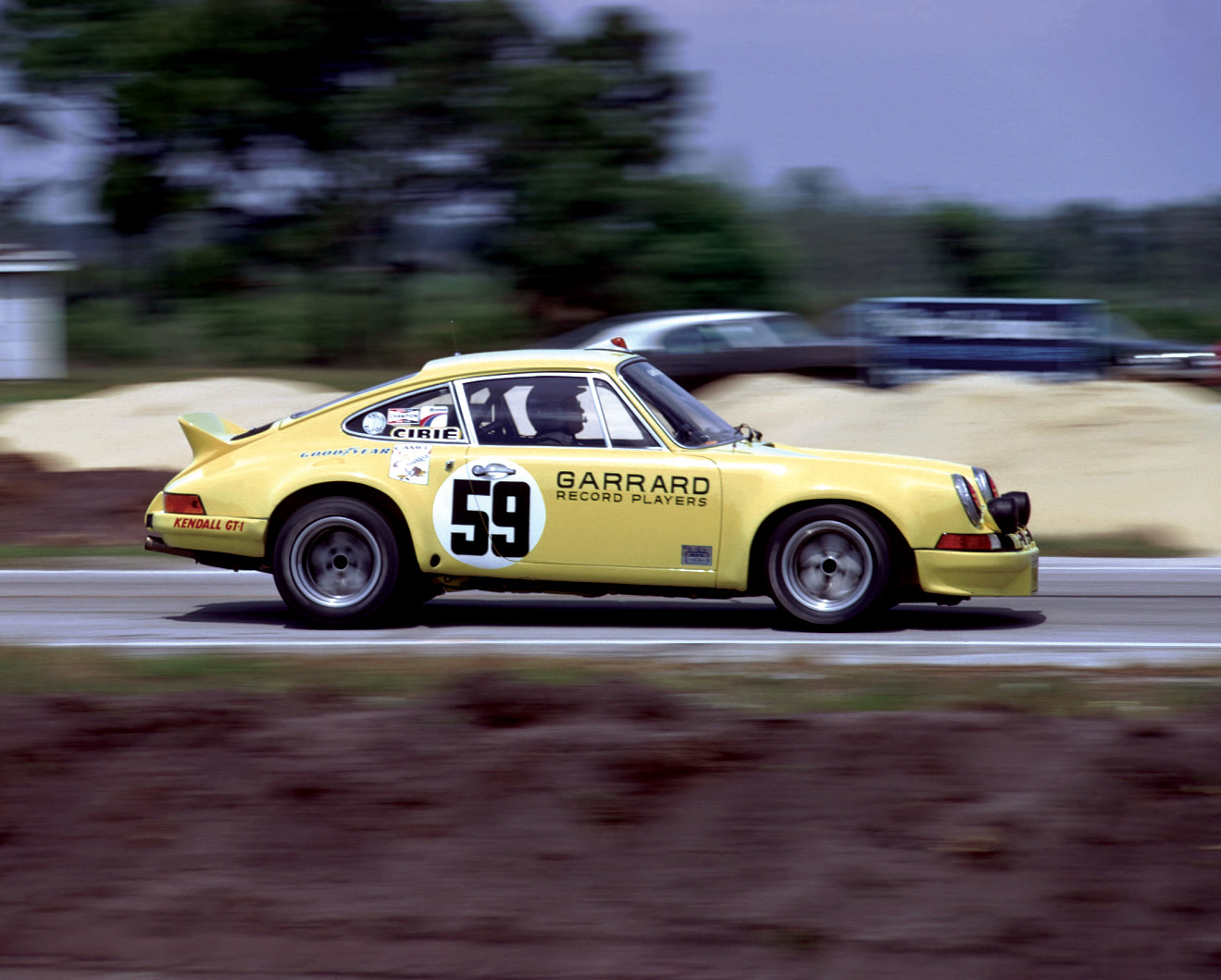The following is an excerpt from “IMSA 1969-1989” that tells the inside story of John Bishop’s life and how he created the world’s greatest sports car racing series. Available from Octane Press or wherever books are sold.
_____________________________________________________________________________________________
To many people, John Bishop became a savior in 1973. For twenty uninterrupted years, starting in 1952, the Sebring 12 Hour sports car endurance race for was held under the guidance of Alec Ulmann, one of the first members of the SCCA when it was founded in 1944. In 1950, Ulmann traveled to Le Mans to take in the sights and sounds of the 24-hour race. The experience inspired him to bring sports car endurance racing to the U.S., which he did with a six-hour race at Sebring later that year – the first such event held in America.
The Sebring track itself began life as Hendricks Army Airfield, a hastily built airport used during WWII as a training site for B-17 bomber crews. After the base was decommissioned in 1945, the airport was turned over to the local community. In the ensuing years, Ulmann convinced the airport authority to let him promote a series of races using the long runways and network of access roads as the track layout. As part of the agreement, one active runway remained in operation during the race.
The start of the first 12 Hours of Sebring in 1952. The event was the brainchild of Alec Ulmann, who organized the race on the decommissioned runways of a World War II B-17 training base. Photo: Sebring International Raceway Archives
Starting with the first 12 Hours of Sebring race in 1952, the event became a crown jewel on the international racing calendar, attracting the best and brightest drivers, manufacturers and race teams from around the world. The AAA acted as the sanctioning body for the first few years, until the organization quit the racing business after the now infamous Le Mans accident in 1955 that killed more than 80 spectators. After that, Alec and Mary Ulmann formed the Automobile Racing Club of Florida (ARCF) as an entity to produce and promote the race. Alec Ulmann was the vice president of the ARCF and also acted as race secretary for the event. The SCCA sanctioned the race from 1963 through 1972, with full backing from ACCUS and the FIA.
Nothing lasts forever, however. Years of use left the track surface broken, with large chunks of concrete regularly coming loose during events. The facilities were spartan for both competitors and spectators alike. Under pressure from the FIA to improve track safety for the ever-increasing speeds of new generation racing machines and to invest in better facilities for the growing crowds, the Ulmann family announced the 1972 running of the event would be the last. After 20 uninterrupted years, the Ulmann’s were tired and wanted to move on. Sebring appeared destined to become just another dusty footnote in racing history.
Recognizing an opportunity for IMSA to take over one of the world’s most recognized sports car events, Bishop approached Bill France Sr., the founder of NASCAR and investor in IMSA, with an idea for NASCAR to put up the money to save the Sebring race. France Sr. wasn’t convinced. According to Bishop: “Big Bill never understood why anyone would pay to see an event at Sebring, whose facilities, let’s say, fell far short of those at Daytona and Talladega.” Bishop couldn’t get his friend and partner to budge.
John Greenwood, on the right with Milt Minter, stepped up to bankroll the 1973 Sebring race, effectively saving the event. He would continue to be involved as a Sebring benefactor for years. IMSA Collection/International Motor Racing Research Center
Then, providence intervened. Bishop happened to be talking with John Greenwood about Sebring on the pit wall at Daytona in January of 1973 and to his surprise, Greenwood offered to put up the money to save the event, including making some needed safety improvements to the track like building a higher wall separating the pits from the main straight. With only a few short weeks to get it all organized and done, the pressure and the stakes were high. But Bishop recognized an enormous opportunity to elevate IMSA’s status in the racing world.
The program cover for the first IMSA-sanctioned 12 Hours of Sebring in 1973. Sebring International Raceway Archives
Reggie Smith, the ex-secretary of the ARCF, now the ex-promoter of the Sebring race, started a new organization called the Sebring Automobile Racing Association, which later on affectionately became known as the Sebring City Fathers. SARA became the official promoter of the event. Greenwood put up the prize money and made safety improvements to the track. R.J. Reynolds was more than happy to have Sebring added to the Camel GT Series calendar, which was now in its second year.
IMSA was not yet a member of ACCUS, which turned out to be a good thing, as it was not under any pressure to adhere to FIA edicts or existing ACCUS rules preventing drivers from crossing over from one member’s sanctioned race to compete in another. For unknown reasons, the SCCA board of governors voted not to interfere with IMSA taking over the race. The Club appeared to have given up on Sebring. All of this meant IMSA had a free hand to sanction an event with an almost mystical international reputation and attract drivers from any race-sanctioning body on the planet.
The runways, taxiways and access roads at Sebring have always been a challenge for racers. The Camaro shared by Luis Sereix, Tony Lilly, and Dave Voder navigates the rough pavement. Note the orange cones intended to guide the competitors at night when Sebring was pitch black and especially tricky to navigate. autosportsltd.com
The 12 Hours of Sebring became the first IMSA Camel GT event of the 1973 season. With the help of RJR’s Joe Camel advertising campaign and renewed interest in the race, a good crowd showed up, ensuring Sebring would become a fixture on the IMSA calendar for many years to come. For many people who lived through the near-extinction of the Sebring race, Bishop was recognized as one of three heroes who stepped in at the last minute to rescue this iconic event. In recognition of their contributions, Bishop, Greenwood and Smith were later inducted into the Sebring Hall of Fame.
The winning Porsche Carrera RS of Peter Gregg, Hurley Haywood, and Dave Helmick at Sebring in 1973. The traditional colors of Brumos were not used as it was Dave Helmick’s car. autosportsltd.com


